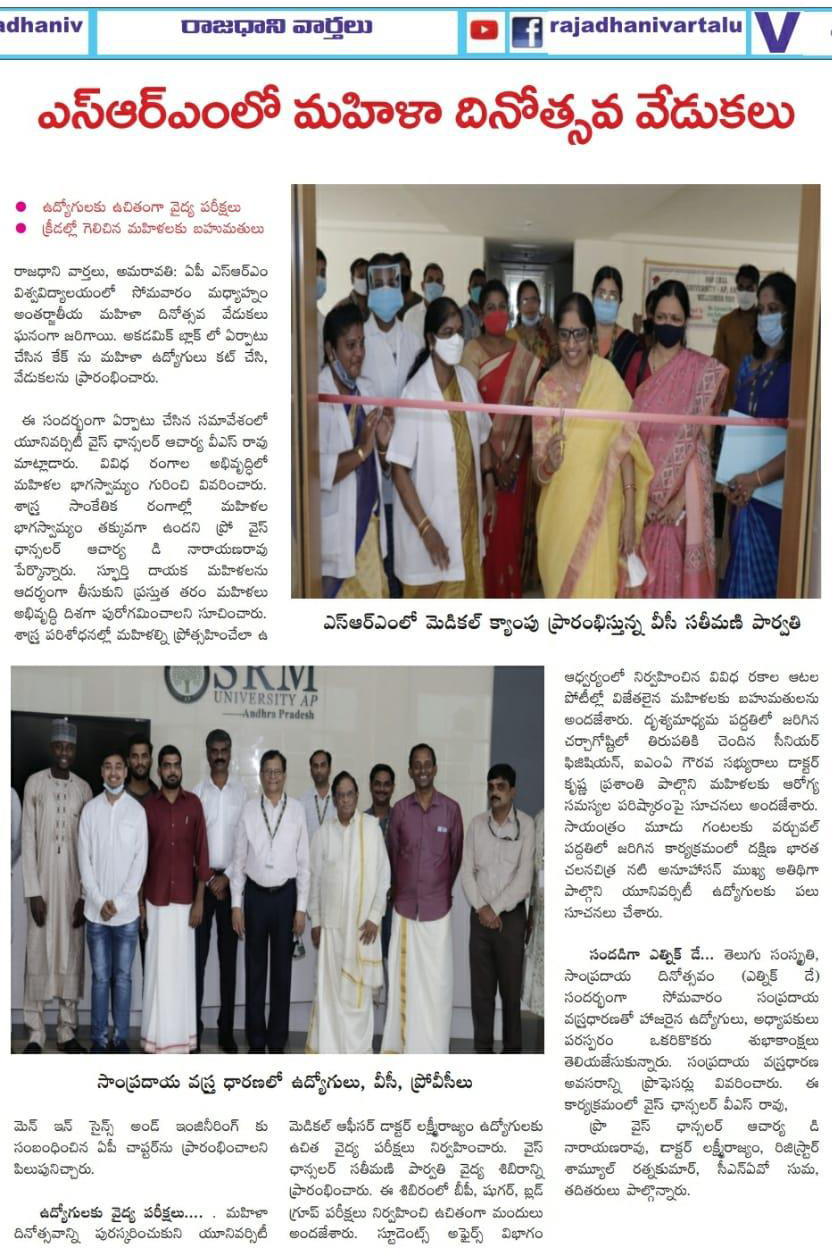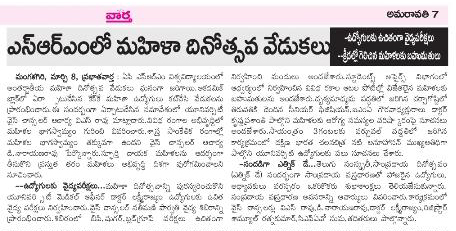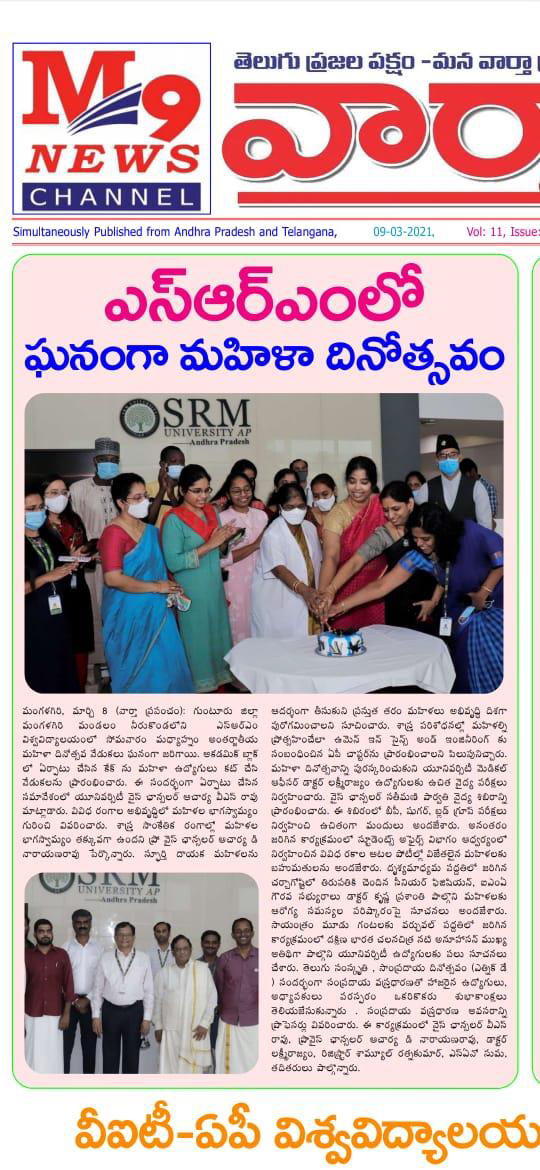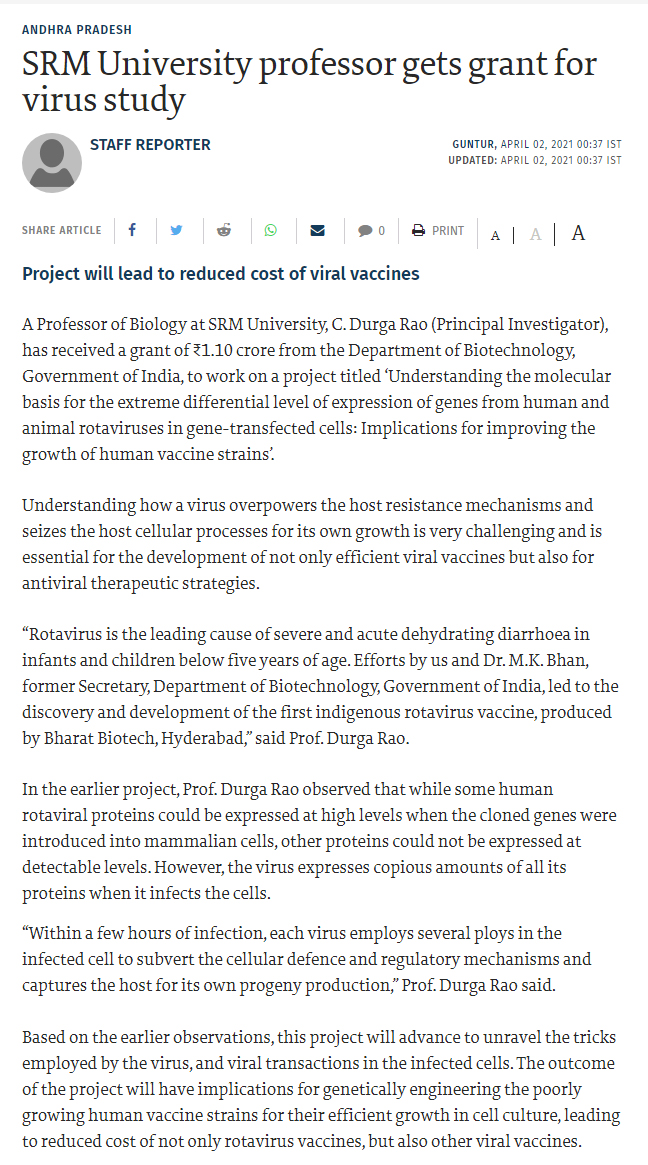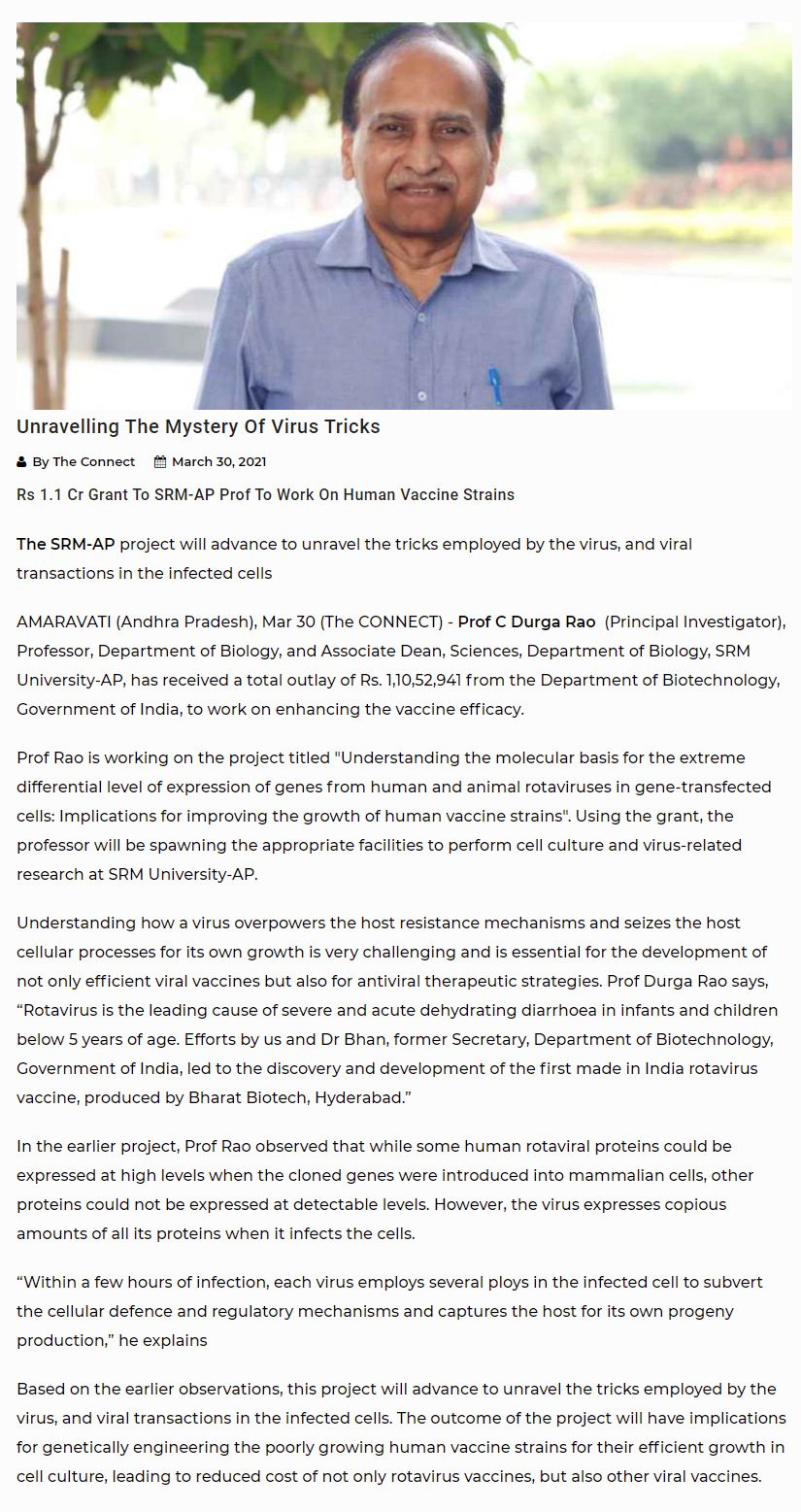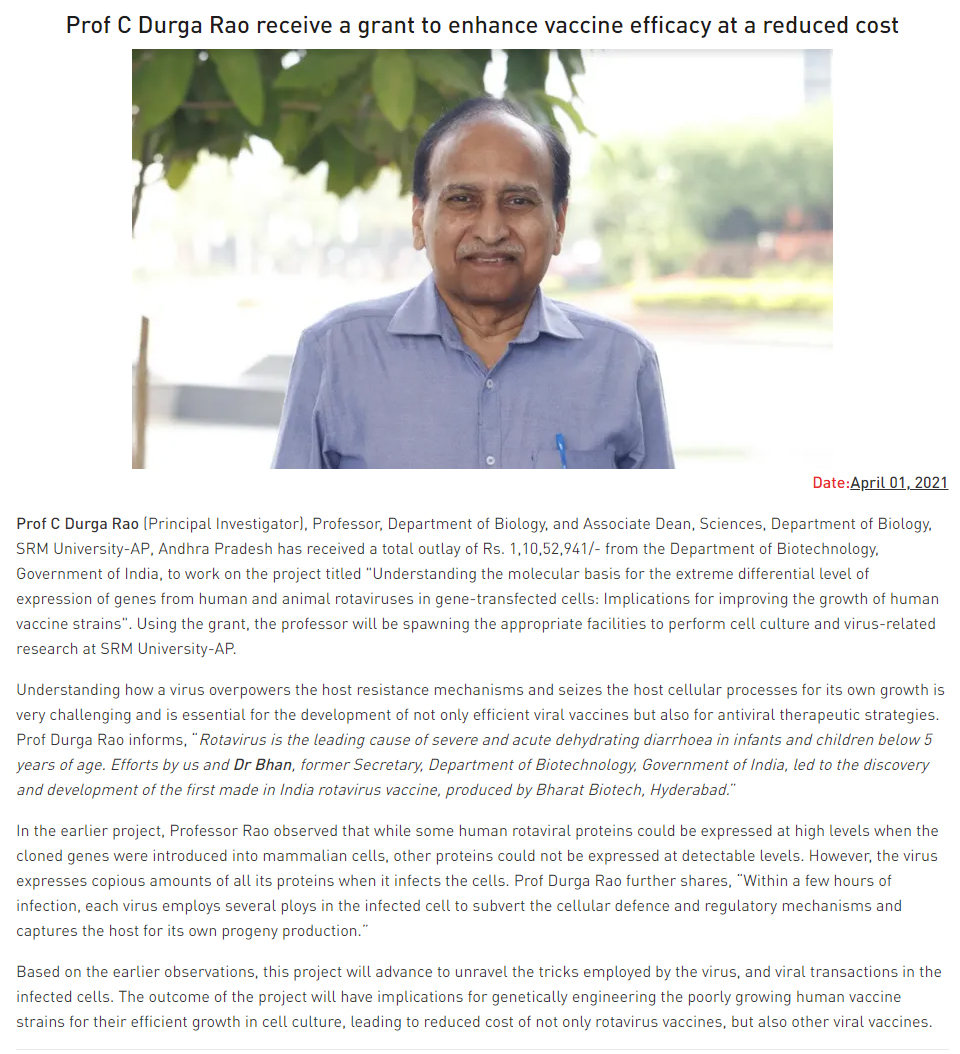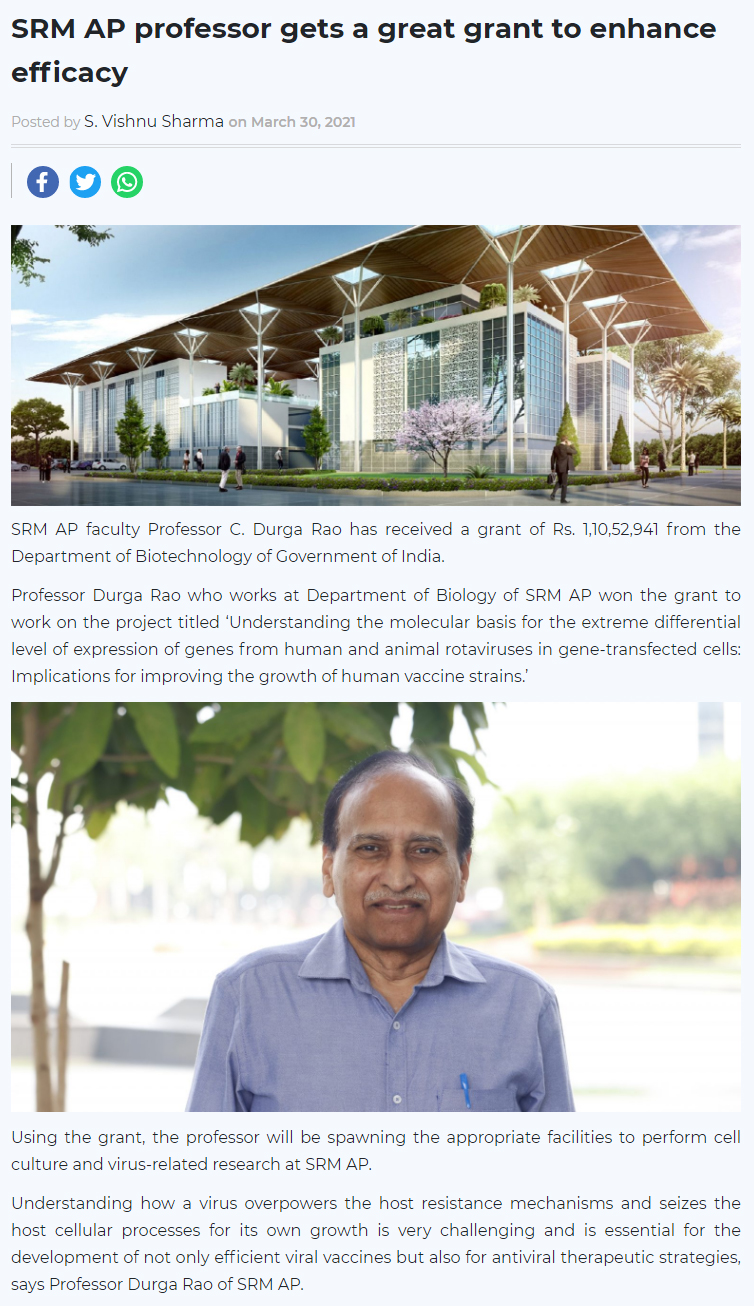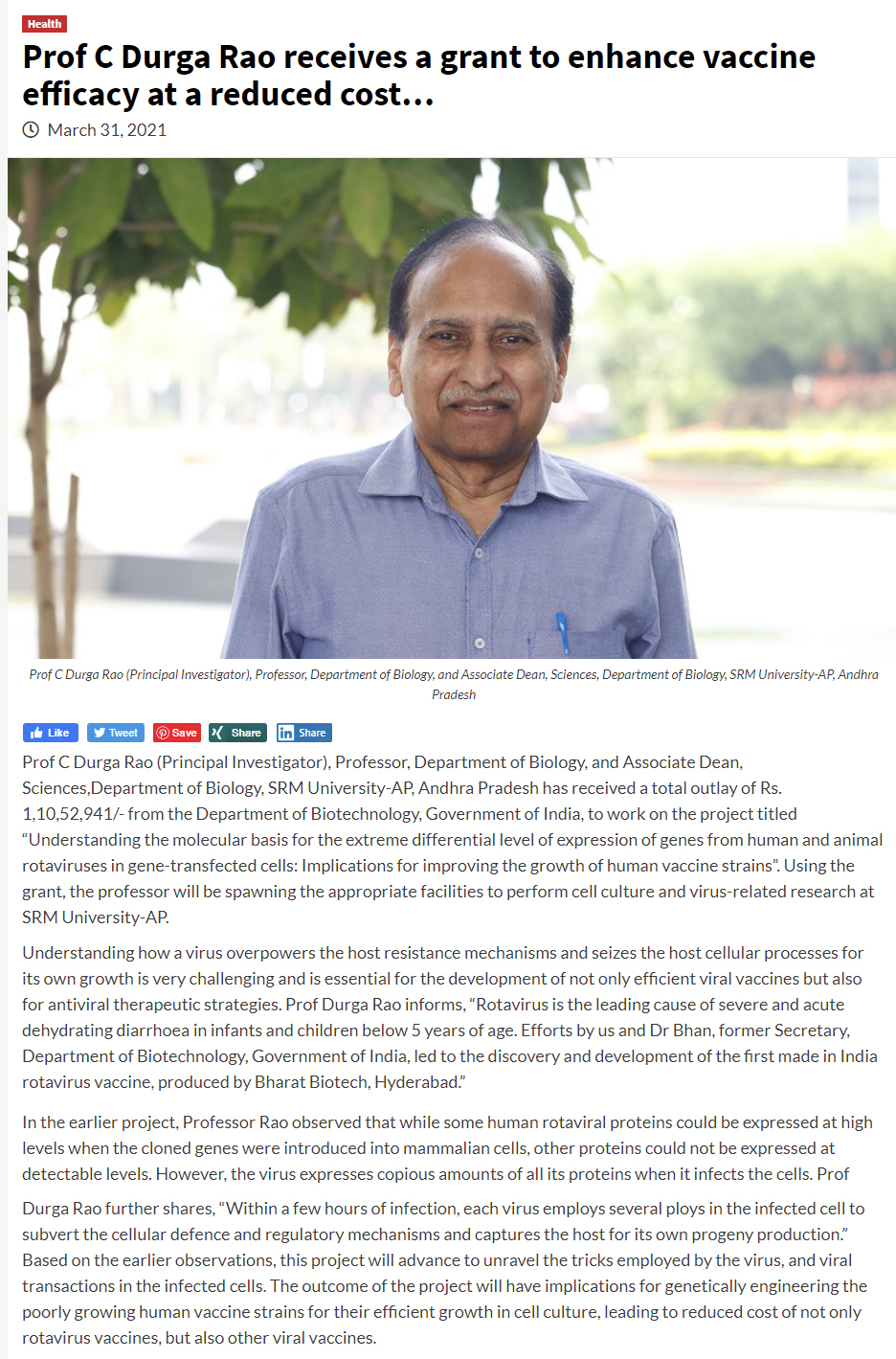All Management News
- Women’s Day Celebration April 6, 2021
- Dr Jatindra Kumar Dash devices technique for easy detection of Interstitial Lung Diseases April 5, 2021
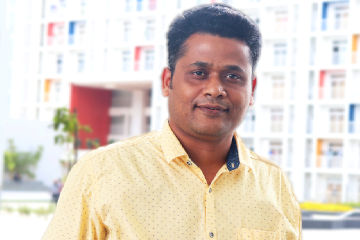 Dr Jatindra Kumar Dash, Associate Professor, Computer Science and Engineering, has recently published a paper, “Content-based image retrieval system for HRCT lung images: Assisting radiologists in self-learning and diagnosis of Interstitial Lung Diseases” in the reputed Springer Journal- Multimedia Tools and Applications. The research has been carried out in collaboration with Prof. Sudipta Mukhopadhyay, IIT Kharagpur and Professor & Head, Department of RADIO DIAGNOSIS & IMAGING, Post Graduate Institute of Medical Education and Research, Chandigarh.
Dr Jatindra Kumar Dash, Associate Professor, Computer Science and Engineering, has recently published a paper, “Content-based image retrieval system for HRCT lung images: Assisting radiologists in self-learning and diagnosis of Interstitial Lung Diseases” in the reputed Springer Journal- Multimedia Tools and Applications. The research has been carried out in collaboration with Prof. Sudipta Mukhopadhyay, IIT Kharagpur and Professor & Head, Department of RADIO DIAGNOSIS & IMAGING, Post Graduate Institute of Medical Education and Research, Chandigarh.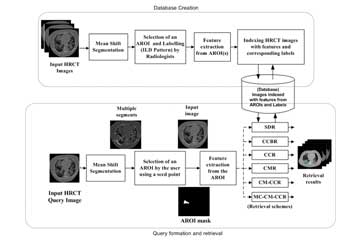 Content-based Image Retrieval (CBIR) is a technique that can exploit the wealth of the data stored in the repository and help radiologists in decision making by providing references to the image in hand. A CBIR system for High-Resolution Computed Tomography (HRCT) lung images depicting the sign of Interstitial Lung Diseases (ILDs) is built, and the system can be used as a self-learning tool by budding radiologists. The system is built by addressing several challenges using advanced machine learning techniques. The objective of this work is to develop a CBIR system for ILDs that is reliable and needs minimal human intervention for ling disease diagnosis.
Content-based Image Retrieval (CBIR) is a technique that can exploit the wealth of the data stored in the repository and help radiologists in decision making by providing references to the image in hand. A CBIR system for High-Resolution Computed Tomography (HRCT) lung images depicting the sign of Interstitial Lung Diseases (ILDs) is built, and the system can be used as a self-learning tool by budding radiologists. The system is built by addressing several challenges using advanced machine learning techniques. The objective of this work is to develop a CBIR system for ILDs that is reliable and needs minimal human intervention for ling disease diagnosis. The system developed will act as a helping tool for radiologist by providing a second opinion for the diagnosis of a diverse group of lung diseases called Interstitial Lung Disease. It will help the budding radiologist for self-learning. When used in daily medical practice, the system may reduce the workload of radiologists in countries, having a low number of physicians per inhabitants.
The system developed will act as a helping tool for radiologist by providing a second opinion for the diagnosis of a diverse group of lung diseases called Interstitial Lung Disease. It will help the budding radiologist for self-learning. When used in daily medical practice, the system may reduce the workload of radiologists in countries, having a low number of physicians per inhabitants. Dr Dash is associated with SRM University-AP for almost three years. His research interests include Content-Based Image Retrieval, Medical Image Analysis and Texture Analysis. He has currently employed his time into the design and development of a Computer-Aided Diagnosis System for Lung Cancer Screening.
Dr Dash is associated with SRM University-AP for almost three years. His research interests include Content-Based Image Retrieval, Medical Image Analysis and Texture Analysis. He has currently employed his time into the design and development of a Computer-Aided Diagnosis System for Lung Cancer Screening. Read More: https://link.springer.com/article/10.1007/s11042-020-10173-4
Continue reading → - Career prospects in energy storage technology April 5, 2021
What is Energy Storage?
Ever since humans mastered energy capture, energy storage and retrieval for use at a later point of time or place has been the key pursuit in power engineering. As per Wikipedia, “Energy storage is the capture of energy produced at one time for use at a later time. A device that stores energy is generally called an accumulator or battery.”
Insert video: https://www.youtube.com/watch?v=4JGMm8qDfxw
Why is it important?
Energy comes in multiple forms, which include radiation, chemical, gravitational, electrical, temperature, and kinetic. Energy storage technology converts energy from these forms into economically storable forms that are safe and accessible.
Energy storage systems are assuming greater importance with the increasing focus on sustainable energy (solar, wind, hydro) electric vehicles and the rapid rise in use of battery-powered electronic devices like smartphones, which has led to a surge in production of lithium-ion batteries. This makes energy storage one of the most promising upcoming sectors.Insert video: https://www.youtube.com/watch?v=ljKFr_o24jo
What are the industries involved in Energy Storage?
When one thinks of Energy Storage, one immediately thinks of batteries. However, batteries are about storage and retrieval of chemical energy, but energy is of many different types. A hydroelectric dam, stores gravitational potential energy, ice storage tanks store ice frozen by cheaper energy at night to meet peak daytime demand for cooling, and fossil fuels such as coal and gasoline store ancient energy derived from sunlight, buried and over time and then converted into these forms. Industry application include power storage and distribution obviously, but also automobiles, real estate, mining, and telecom.
Insert video ‘Future of Energy Storage’: https://www.youtube.com/watch?v=_LAuDTNW5dw
Beyond Batteries: https://www.youtube.com/watch?v=3R7EzO3uBms
Who is the field relevant for?
The demand for energy storage systems is likely to grow exponentially globally as the world shifts towards renewable energy sources. This shift will mandate both grid level and unit level energy storage systems that are of a viable size, cost, and energy efficiency. Significant research is currently being conducted on materials, engineering, and other optimisations.
The kind of backgrounds required for this field could include:
-
Metallurgists for analysing potential of viable materials,
-
Chemical engineers and chemistry graduates,
-
Electrical engineers
-
Automobile engineers interested in electric vehicle development
However, energy storage is somewhat interdisciplinary bringing together material science with expertise in the energy storage using sectors.
What are the career prospects?
Estimates by Lux Research, an independent research and advisory firm, suggest that the global industry for energy storage could be worth $100billion in the next few years.
Given the focus, demand, and growth, energy storage sector will generate significant jobs in the future. Moreover, due to the shortage of qualified professionals relative to demand, entry salary and salary growth prospects are positive.How do I get started?
The roadmap involves an undergraduate degree in electrical engineering or material sciences with a focus on specific courses in renewable energy and energy storage.
Continue reading → -
- Careers in Nanomaterials April 5, 2021
What are Nanomaterials?
Nanomaterials are substances or materials that are manufactured and used at a, as the name suggests, very small scale. ISO (2015) defines a nanomaterial as a ‘material with any external dimension in the nanoscale (size range from approximately 1 – 100 nm) or having internal structure or surface structure in the nanoscale’.
Insert video: https://www.youtube.com/watch?v=DAOFpgocfrg
Why are they important?
Nanomaterials are the most recent and most exciting development in materials science. Nanoscale materials have unique optical, electronic, or mechanical properties. Thus, when compared to the same material which is not at a nanoscale, they show more optimal performance measured typically in strength, chemical reactivity or conductivity.
What are the industry applications of nanomaterials?
The scope, unlike the size of nanomaterials, is massive:
-
Better building insulation,
-
More energy efficiency,
-
Better batteries,
-
Better cosmetics,
-
Nimble automobiles, aircraft, ships, spacecraft
…..there is nothing nano about the potential for nanomaterials and nanotechnology. There is every possibility that this field will touch just about every industry that exists today and will even create new and unthought of applications.
Insert video: https://www.youtube.com/watch?v=fY0E4xRyfek
Who is the field relevant for?
Considering that we have only just begun to understand the scope of development and application of nanomaterials, the future for this field is bright.
The kind of backgrounds required for this field could include:
-
Engineers,
-
Material Scientists, and
-
Physics, Chemistry, and Biology graduates.
However, nanoscience is essentially interdisciplinary wherein science is applied to engineering and hence a holistic mindset/approach is needed.
What are the career prospects?
As mentioned, the industries requiring this expertise are extremely diverse. Currently, nanomaterials have seen significant adoption in sectors like:
-
Electronics,
-
Textiles,
-
Polymers,
-
Packaging,
-
Transportation,
-
Sporting goods,
-
Computing,
-
Medical equipment,
-
Forensics,
-
Military, and
-
Energy, among others.
According to the widely followed recruiter.com, salaries in the USA range between $45,000 and $73,000 for nanotechnology engineering technicians. Needless to say, as use of nanomaterials expands engineers with significant experience can see their salaries grow significantly in the coming years, more so since demand will outstrip supply of candidates.
How do I get started?
The pathway starts from an undergraduate degree in engineering or sciences with a focus on specific courses in nanotechnology, nanomaterial, or nanoscience. Alternatively, with the growth of nanoscience in India several universities including SRM AP offer undergrad and masters courses with specialisation in nanotechnology. This can be coupled with the many options available at the PhD level in this exciting field.
Continue reading → -
- Engineering Physics: Great Career Choices April 5, 2021
What it is
Engineering Physics refers to the combined disciplines of physics, mathematics, and engineering. The field seeks ways to apply, design, and develop new solutions in engineering and holds promising career prospects for interested graduates of science or engineering.
One of the biggest advantages of Engineering Physics is that unlike traditional engineering or science disciplines, it does not restrict itself to one domain. The focus is on applied physics covering highly specialised fields such as quantum physics, materials science, applied mechanics, electronics, nanotechnology, microfabrication, microelectronics, computing, photonics, nuclear engineering, biophysics, control theory, aerodynamics, energy, solid-state physics, and others.
The focus on coming up with integrated solutions sourced from multiple specialities ensures that the solutions thus derived are more optimal, effective, and efficient. The cross-functionality also serves as a bridge for the long-standing gap between the theoretical and practical sides of science and engineering.
Who is it for
As stated, graduates of science or engineering can look to specialise in Engineering Physics. Scientists looking to move beyond theory, or engineers looking to create real solutions to tangible problems using theoretical rigour find this field exciting.
Career prospects
Qualified engineering physicists fit in into opportunities within high technology industries some of which are in emergent domains. Broadly speaking, the roles span research and development, design, and analysis. The industry will depend on the engineering specialisation that is selected, i.e. mechanical, computer, nuclear, aerospace, etc.
Engineering Physics is well poised to grow as a segment specifically because of the many emergent sectors in which it has application as well as the technological progress in the last decade that has created entirely new industries. Some of the key areas that will see job growth are discussed below.Agro Physics
The pressures of a growing global population and the need for sustainable agriculture are going to [belatedly] lead to science and engineering playing a larger role in how we grow crops. Agro Physics is an evolving field and it involves the study of materials and processes in the sowing, harvesting, and processing of agricultural produce.
Artificial Intelligence
Artificial Intelligence or AI refers to machines that mimic human cognitive functions such as learning and problem solving. This exciting field is growing by leaps and bounds and holds great promise in automation of many processes besides an exponential growth in processing capacities.
Biomechanics
Biomechanics involves the study of the structure, function and motion of the mechanical aspects of living systems. The field touches applications such as aerodynamics, orthopedics, locomotion, pathology, oncology, among others.
Bionanotechnology
Bionanotechnology refers to the combination of nanotechnology and biology. Here, bio systems within nature are used as inspiration for creating new nanodevices or nanoparticles. Nanomedicine is the obvious field that is looking to benefit from the progress made in Bionanotechnology, while agriculture is another sector that will see application of new solutions.
Composite materials
A composite material is made from two or more constituent materials with significantly different physical or chemical properties that, when combined, produce a material with characteristics different from the individual components. The objective could be to make the composite lighter, stronger, harder, softer, resistant, flexible, rigid, etc. While composite materials have existed since ages (concrete and steel are composite materials!), limits in development of new materials are constantly being pushed through progress in Engineering Physics.
Machine learning (ML)
ML is a subset of AI and refers to algorithms and statistical models that computer systems use to perform a task without any instructions input by human operators, relying on patterns and inference instead. ML is beginning to find application across many sectors including primarily Economics, Finance, Forensics, Medicine, Search Engines, etc.
Microfabrication
Miniaturisation of various devices (think about the first cell phones and compare them with devices today) has led to the need for Microfabrication, which is the process of fabricating miniature structures of micrometre scales and smaller. Progress in material science, nanotechnology, and other fields has led to growth in possibilities in this field.
Nanotechnology
Nanotechnology is the manipulation of matter on an atomic, molecular, and supramolecular scale. Apart from medicine, Nanotechnology holds immense potential for multiple industrial sectors such as defence, textiles, food packaging, sports, construction, and energy. The fruits of the research conducted in this exciting field over the years is only just beginning to be realised.
Neural engineering
The human neural system is an extremely complex arrangement linking the brain with the rest of the body. Neuroscience is still making tentative progress in understanding how this system works and this pace has quickened lately thanks to the improvement in imaging systems. Neural engineering is a discipline within bioengineering that uses engineering to understand, repair, replace, or enhance these complex neural systems. Aspects such as Neuroimaging, Neuromechanics, Neuromodulation, Neurorobotics, and Neuroregeneration hold great promise for patients who have been resigned to living with neurological disorders.
Robotics
Robotics is the true combination of Computer, Electronics and Mechanical Engineering with Physics. While Robots have existed since many decades now, the application across more sectors, the sophistication of the robotic systems, and their efficiency are being enhanced through the many technological developments. This will lead to productivity and efficiency gains across multiple sectors.
Continue reading → - The 5 aspects to look for in a business course to be future ready April 5, 2021
Learning business management is a complicated enough exercise with experts divided on whether management is science or art, or both. In the current era, the complications are compounded by the pace of change. Theories and frameworks are getting outdated rapidly and textbooks can be obsolete by the time they reach the student’s desk from the printer. In this scenario, how does a student ensure that the business studies course is keeping him or her future ready? The answer is not easy given the situation, but there are 5 universal aspects that few would dispute.
1. Practical experience
Many business studies courses are geared towards freshers with limited to no work experience. If the course itself offers no avenues for practical experience then the student graduates with a skill handicap. Look for courses that offer hands-on business experience during studies. This can be in the form of industrial projects from real companies, internships, assistance on faculty research projects for companies, or even simple opportunities for interaction with the real business world. Being in actual situations, facing real problems of real people shapes your world view and the sooner you can gain this experience the better. For this, look for institutions that have tie-ups for such opportunities with their recruiters and other corporates.
2. Soft skills
Many business studies courses are geared towards freshers with limited to no work experience. If the course itself offers no avenues for practical experience then the student graduates with a skill handicap. Look for courses that offer hands-on business experience during studies. This can be in the form of industrial projects from real companies, internships, assistance on faculty research projects for companies, or even simple opportunities for interaction with the real business world. Being in actual situations, facing real problems of real people shapes your world view and the sooner you can gain this experience the better. For this, look for institutions that have tie-ups for such opportunities with their recruiters and other corporates.
3. People matter
In a networked and ever-changing business world, no one can function in a silo. Effective team work is essential in an era where multiple perspectives are needed to solve complex problems. And this means people need to be effective at working together. Empathy, accommodation, appreciating diversity, understanding and working with differences, and sensitivity are the key skills that need to be developed for success and these are timeless skills. Institutes that build in team work and people dependencies into course work will help groom managers who can work effectively and efficiently with any group of co-workers. This is why many courses involve a large volume of team assignments, presentations, and projects.
4. Global perspective
Globalisation is a reality that no business, big or small, can ignore and this will only compound in the future as trade and people mobility go up in future. Even an entry level business manager needs to be cognisant, aware, and prepared to work in a complex and interlinked world. How do you achieve this when many entry level managers have not even stepped out of their city of birth? Developing the ability to work with different nationalities, being comfortable in foreign environments, and being able to blend into the unfamiliar are going to be must have skills for the future and preparation needs to begin early. Courses that offer foreign language courses, cross-cultural collaboration opportunities, international exchange programs, diverse pool of international students, and opportunities to learn from foreign visiting faculty are one way to prepare for this business reality.
5. An entrepreneurial approach
Some theoretical concepts are timeless while other whither away. However new approaches to solving old problems and developing abilities to deal with new problems are always evolving. After all, many of the challenges and opportunities seen today did not exist even 5 years ago. How would a graduate from then cope today and how will he/she cope tomorrow? The dynamism needed to face unique situations and problems comes from developing an entrepreneurial mindset in students from an early stage. This mindset can be developed through a pedagogy that focuses on doing, experimenting, failing, learning, unlearning, and taking responsibility for one’s efforts. Courses that spoon feed will soon disappear into the sands of time, as will the students who learned with such approaches.
Bear in mind that there is no course which will teach you all the skills you will need in the future. A course can provide you with timeless skills, some of which are listed above, and it can provide you with a mindset of flexibility, entrepreneurship, ownership, responsibility, and risk taking. If you have these then your skill set is indeed timeless.
Continue reading → - Faculty members of SRM University-AP awarded separate research grants by the National Supercomputing Mission (NSM), Government of India April 5, 2021
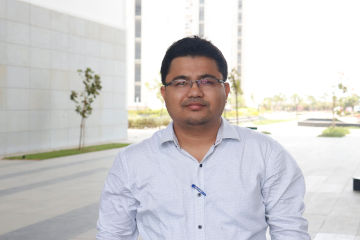 Prof Ranjit Thapa, Professor, Department of Physics, SRM University – AP, Andhra Pradesh has been awarded a first-year grant of Rs 28 Lakhs by the National Supercomputing Mission (NSM), supported by the Department of Science and Technology (DST) in collaboration with the Ministry of Electronics and Information Technology (MeITy), Government of India. Prof Ranjit will be working on the project titled “Catalysts for CO2 Reduction to C2 Product: Descriptor to Database” as the project leader. He has started the work to search for the best catalyst to convert CO2 into useful product and hence solving the problem of climate change due to large production of CO2 through different sources.
Prof Ranjit Thapa, Professor, Department of Physics, SRM University – AP, Andhra Pradesh has been awarded a first-year grant of Rs 28 Lakhs by the National Supercomputing Mission (NSM), supported by the Department of Science and Technology (DST) in collaboration with the Ministry of Electronics and Information Technology (MeITy), Government of India. Prof Ranjit will be working on the project titled “Catalysts for CO2 Reduction to C2 Product: Descriptor to Database” as the project leader. He has started the work to search for the best catalyst to convert CO2 into useful product and hence solving the problem of climate change due to large production of CO2 through different sources.CO2 is a known greenhouse gas and key reason for global warming and climate change. Can we challenge mother nature by converting CO2, a greenhouse gas into energy with the required efficiency? This is a mystery and a mammoth problem and a much-needed problem to be solved with a fundamental approach. Prof Ranjit Thapa believes that metal nanocatalyst on support materials can solve the problem and can increase the efficiency of CO2 reduction to C2 products, viz., ethylene (C2H4) and ethanol (C2H5OH). An experimental approach to find the best catalyst for CO2 reduction needs enormous funds and trials, and a long time is required to develop the exact catalyst for industry application. The mammoth task is to find the suitable composition, shape, and size of metal nanoparticle (MNP) on an appropriate surface for the catalytic reactions. Prof. Ranjit proposes that this can be achieved by computational modelling using Density Functional Theory (DFT) through finding and estimating the electronic descriptor and revealing active sites through structure-activity relations. Recent progress in Machine Learning (ML) for materials with DFT modelling drives towards rational design of catalysts. The electronic descriptor, storage of MNP/support information in the database followed by prediction using Machine Learning (using predictive model equation) will help to narrow down the search for the best catalyst for CO2 reduction to C2 species.
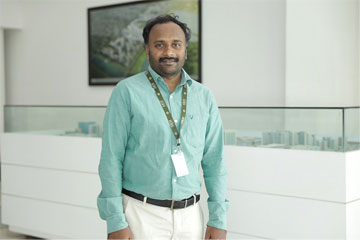 Further, Dr Mahesh Kumar Ravva, Assistant Professor, Department of Chemistry, SRM University – AP, Andhra Pradesh received Rs 19.92 Lakhs as the first instalment from DST-National Supercomputing Mission (NSM). His project’s primary focus will be on understanding the critical factors that influence the performance of organic solar cells. Using the supercomputer, his research group will model the electronic process that occurs during solar cell operation. The outcome of this project will guide experimentalists to develop organic solar cells with higher efficiency. Organic solar cells are flexible, lightweight, and low-cost and have many exciting applications in wearable electronic devices, smart windows, etc.
Further, Dr Mahesh Kumar Ravva, Assistant Professor, Department of Chemistry, SRM University – AP, Andhra Pradesh received Rs 19.92 Lakhs as the first instalment from DST-National Supercomputing Mission (NSM). His project’s primary focus will be on understanding the critical factors that influence the performance of organic solar cells. Using the supercomputer, his research group will model the electronic process that occurs during solar cell operation. The outcome of this project will guide experimentalists to develop organic solar cells with higher efficiency. Organic solar cells are flexible, lightweight, and low-cost and have many exciting applications in wearable electronic devices, smart windows, etc.Prof V S Rao, Vice-Chancellor, SRM University – AP, and Prof D Narayana Rao, Pro Vice-Chancellor, SRM University – AP congratulated Prof Ranjit Thapa and Dr Mahesh Kumar Ravva. Prof Narayana Rao said, “Necessary facilities and support will be provided by the University to effectively carry out the two projects.”
Continue reading → - Dr M Ramakrishnan April 4, 2021
- Prof C Durga Rao Receive A Grant To Enhance Vaccine Efficacy At A Reduced Cost April 4, 2021
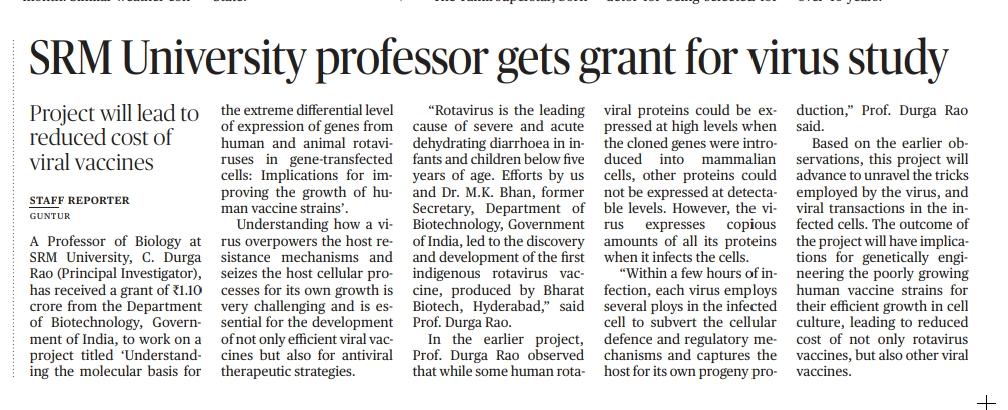
Financial Express – April 03
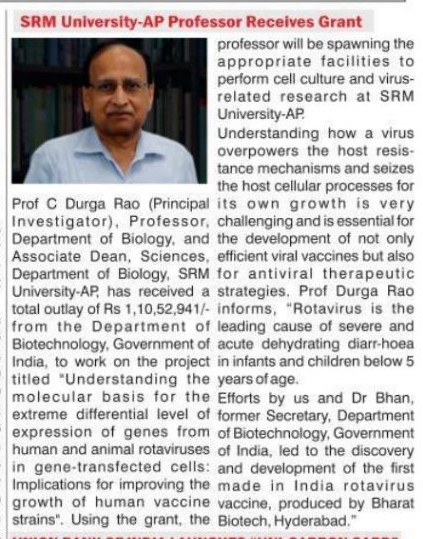
Daily Pioneer – March 31
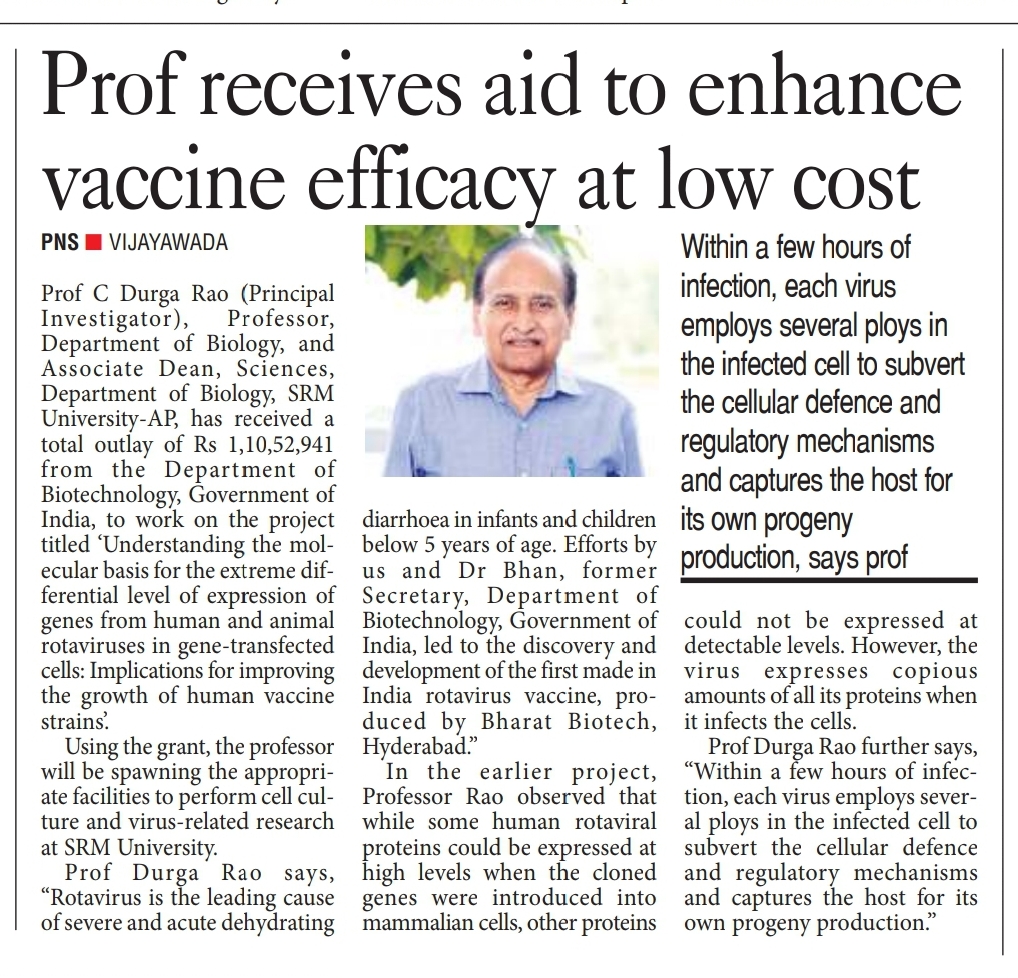
The Hans India – March 28
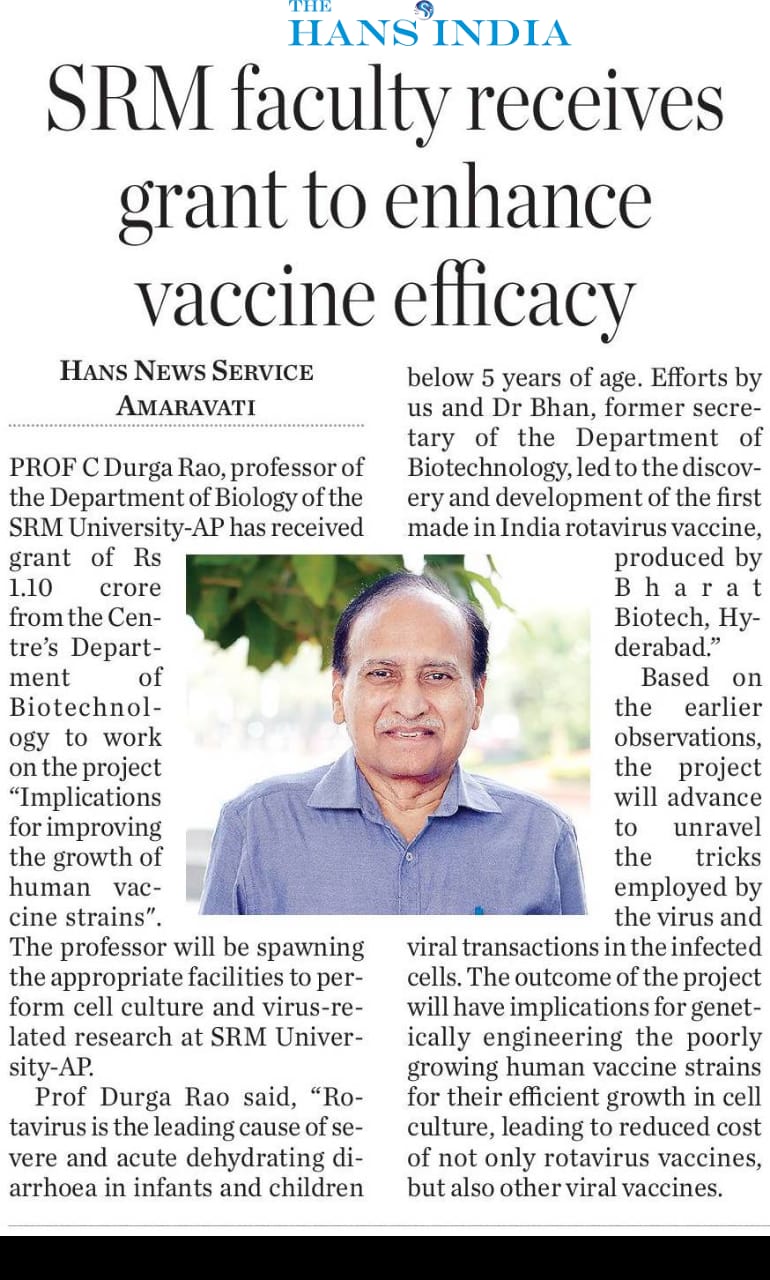
Business News This Week – March 31
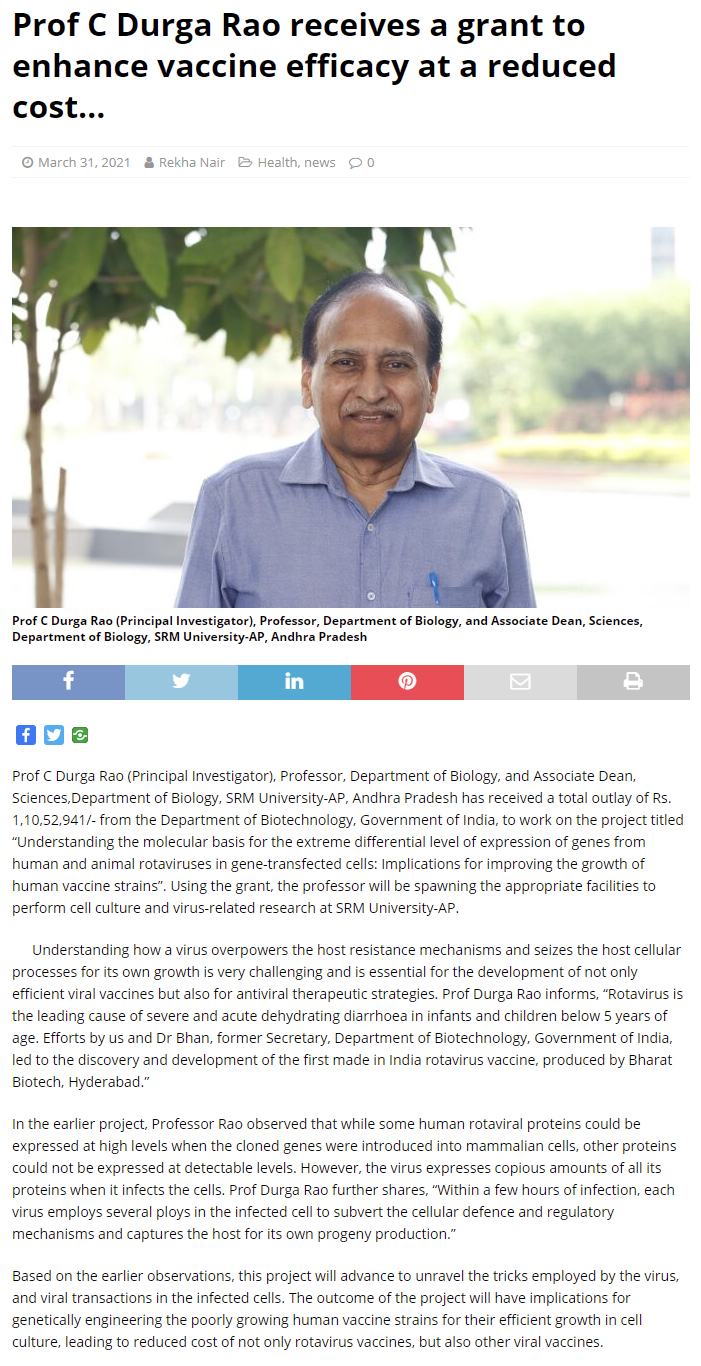
Higher Education Digest – March 30
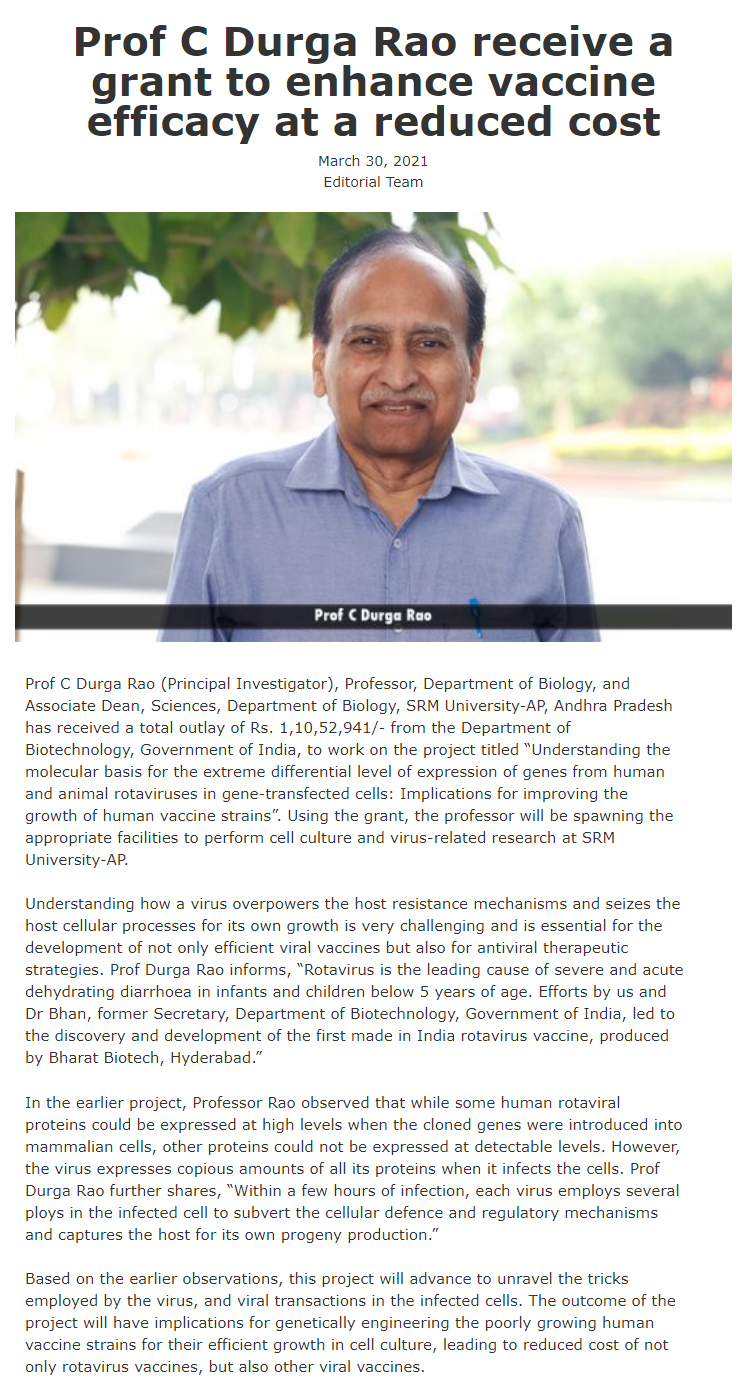
India Education Diary – March 30
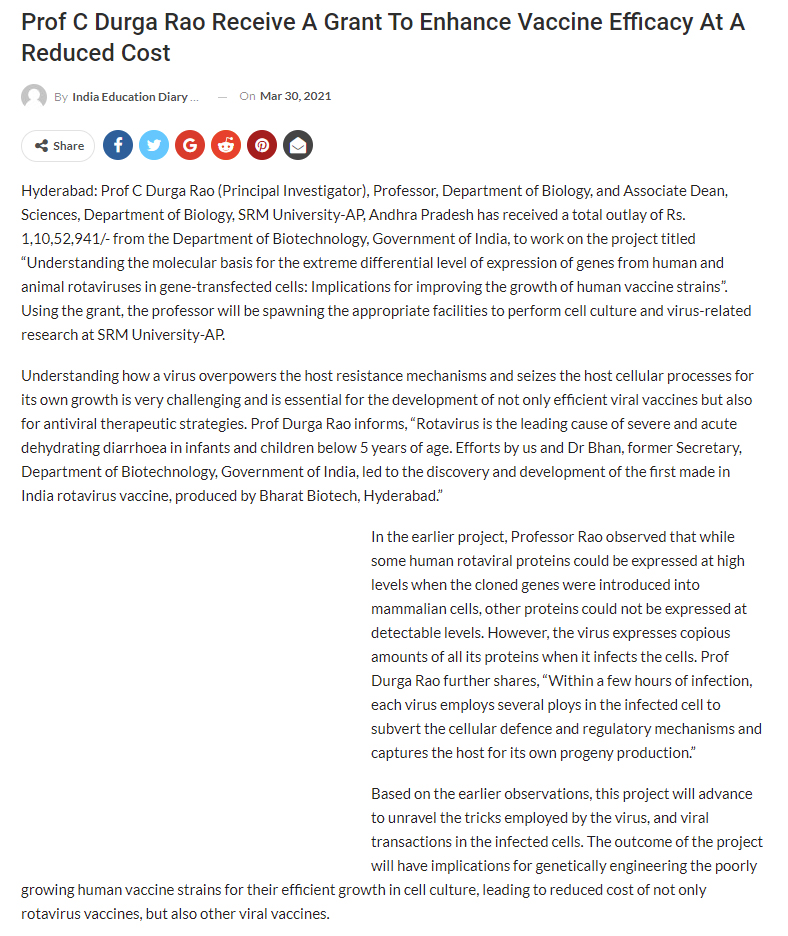
United News of India – March 30
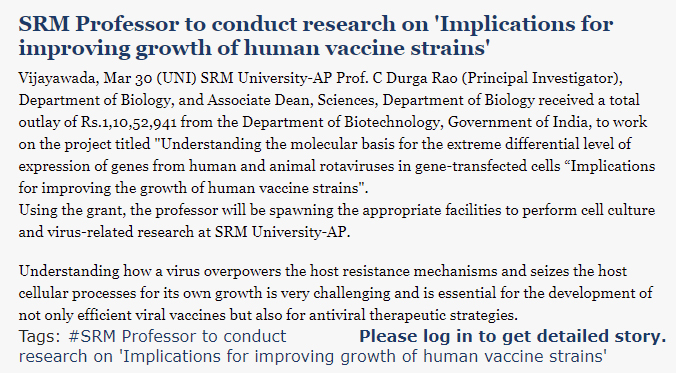
Eenadu – March 31

Andhra Prabha – March 31
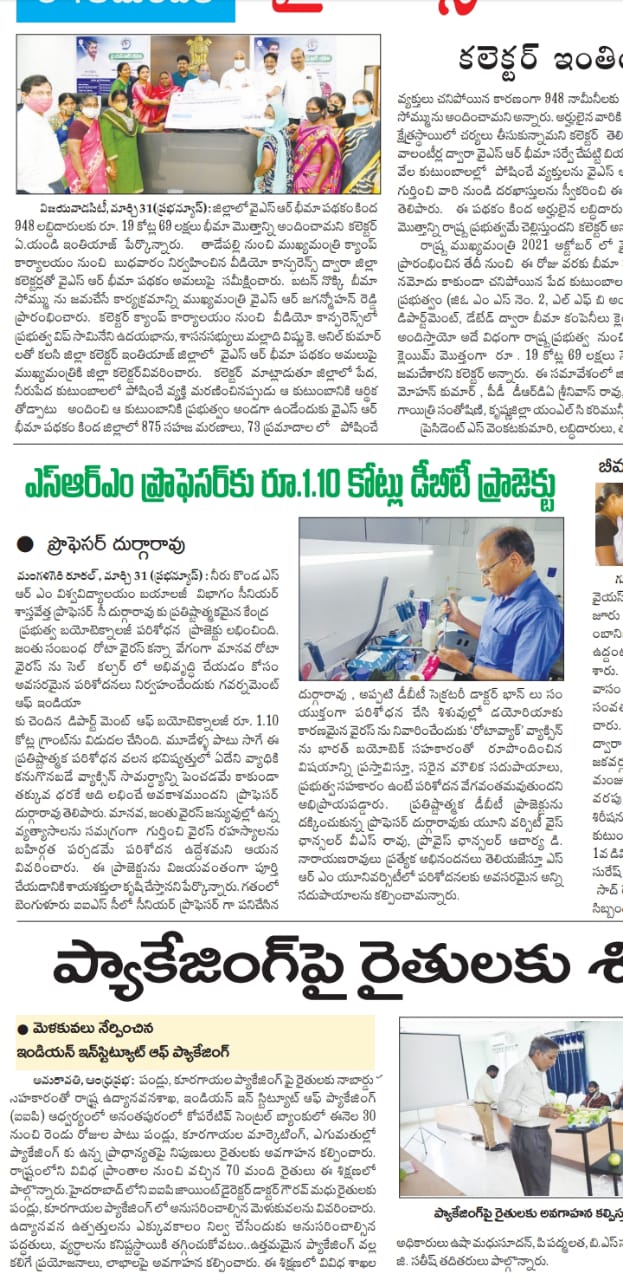
Sakshi – March 31
Continue reading →

- “GETTING GOAL DIRECTED”-Captivating session by Aayushi Sharma April 3, 2021
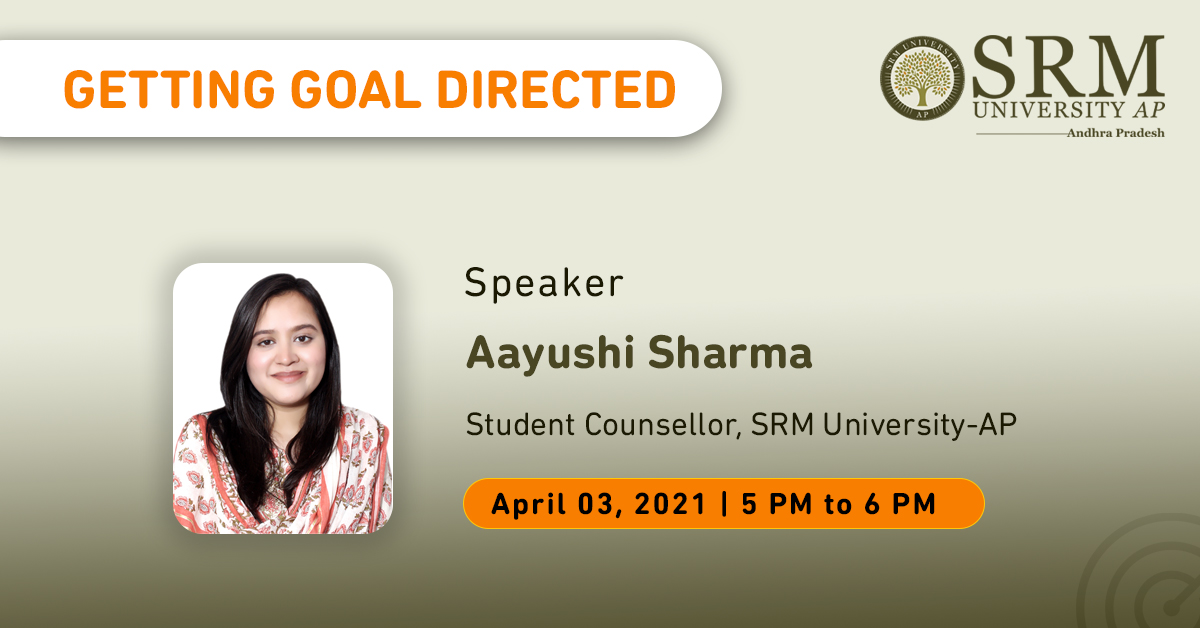 A worthy life is full of admirable goals with a fool-proof plan to achieve those. Be it completing the syllabus, getting a good job, living a peaceful life or retiring with enough money to live; all can be achieved with good planning only. In his celebrated book “Thinking Fast and Slow”, the noble laureate Daniel Kahneman opined, “Intelligence is not only the ability to reason; it is also the ability to find relevant material in memory and to deploy attention when needed.”
A worthy life is full of admirable goals with a fool-proof plan to achieve those. Be it completing the syllabus, getting a good job, living a peaceful life or retiring with enough money to live; all can be achieved with good planning only. In his celebrated book “Thinking Fast and Slow”, the noble laureate Daniel Kahneman opined, “Intelligence is not only the ability to reason; it is also the ability to find relevant material in memory and to deploy attention when needed.”Therefore, it need not be debated that only planning is not enough. You will need proper ways to execute it. This is where Aayushi Sharma comes into the picture. Ms Sharma is your Student counsellor and the appropriate person who can enlighten you on how to plan and turn those plans into actions. Join the captivating session with Ms Aayushi Sharma on April 03, 2021, at 5 pm to know more.
Continue reading →


